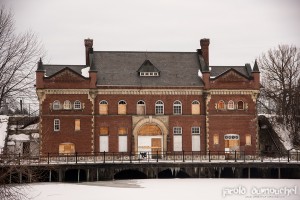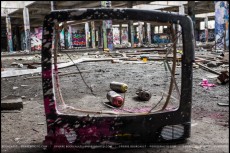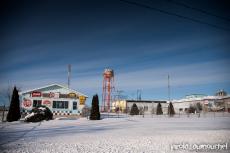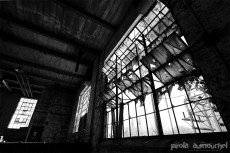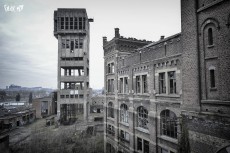No doubt, this is a mysterious building. There is no reliable information about this abandoned building on the Internet. Impossible to corroborate the details found here and there. Indeed, even the name of the building can’t be confirmed. While...
The abandoned power plant
Pretty from the outside, ugly from the inside
Its architecture reminds of the old ramparts of Quebec instead the image to which one is accustomed to power plants.
Yet it is part of this canadian architectural style of the late nineteenth and much of the twentieth century. One of the few industrial buildings inspired by the architectural wave, by cons. Built in a little less than a year in 1899, the building was divided into three parts: the machinery was in the central portion; left were the quarters of the workers and warehouse was located to the right. Today, the three divisions remain, but while the central part has been emptied of its contents, the two wings have been converted into apartments. The rooms are small and the stairs are narrow and the floor could collapse at any time under the weight of visitors.
Historic monument since 2007, the building now belongs to the city who wishes to promote this building with a project to be defined. Although it does not seem to have any water infiltration, its structure is not in a good shape. Many bricks threaten to collapse in several places, the floors are dangerously wavy and many stilts have been added to the outer gallery to prevent it from sinking into the small marsh.
Real vestige of a era when electricity had not yet been nationalized, it is one of the last four hydroelectric plants that remain among the 87 built in Quebec before 1900. With the electricity produced, the plant was able to light and operate the different locks, swing bridges and weirs. The operation of the canal was therefore maximized and allow workers to manage the seaway during day and night.
The plant ceased operations in 1959.
Related content
The place is big, very big. While the building is nearly 200,000 square feet, the site, meanwhile, is over than 430,000 square feet in an agricultural area of Saint-Jean-sur-Richelieu. For those interested, the site is for sale and the current...
It's over 92 years of industrial history that ended in 2004 when the Spexel factory was closed down. The story of this plant start in 1912 when is built the paper mill, which took the name of Howard Smith Paper Mill. Over the following years, the...
The Coal mine of Hasard de Cheratte is the main colliery of Société anonyme des Charbonnages du Hasard, composed of four mine shafts. It is located in Cheratte, a section of the Belgian town of Visé located in the Walloon Region in the province...




